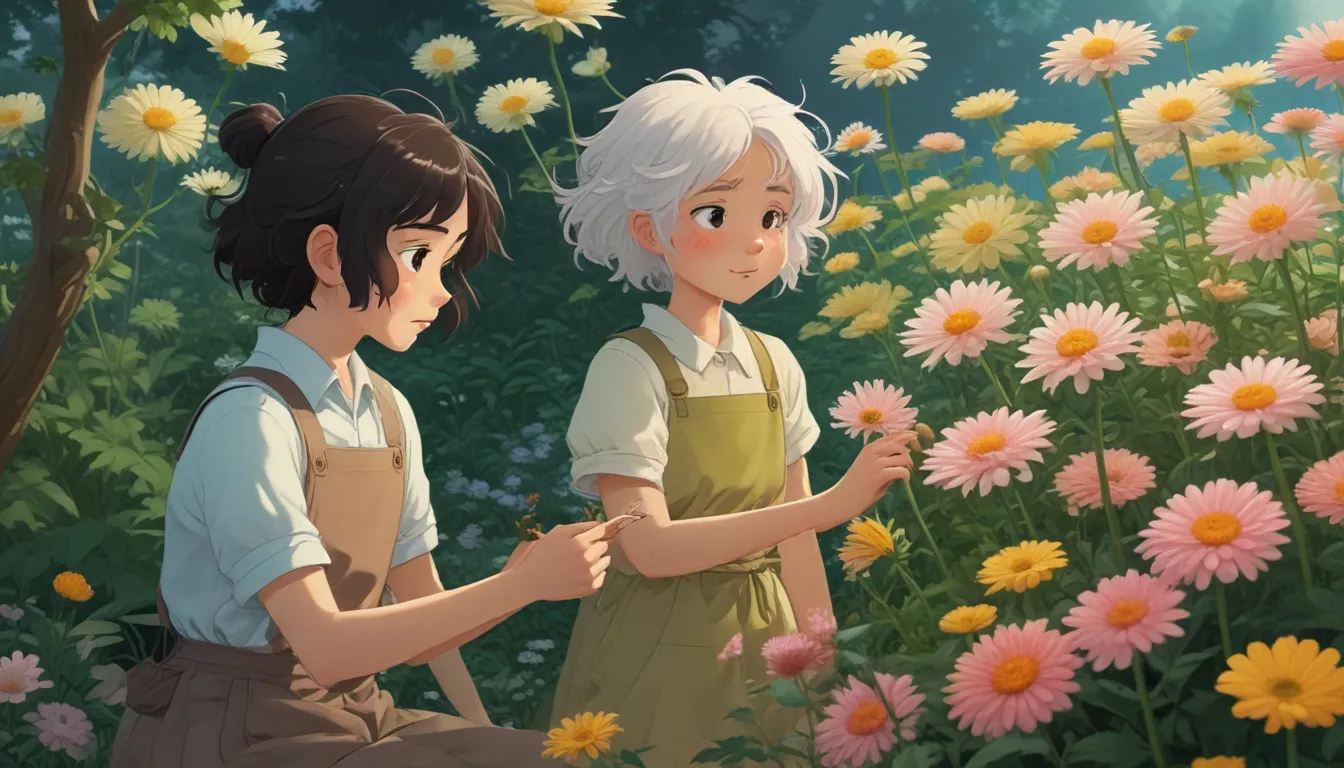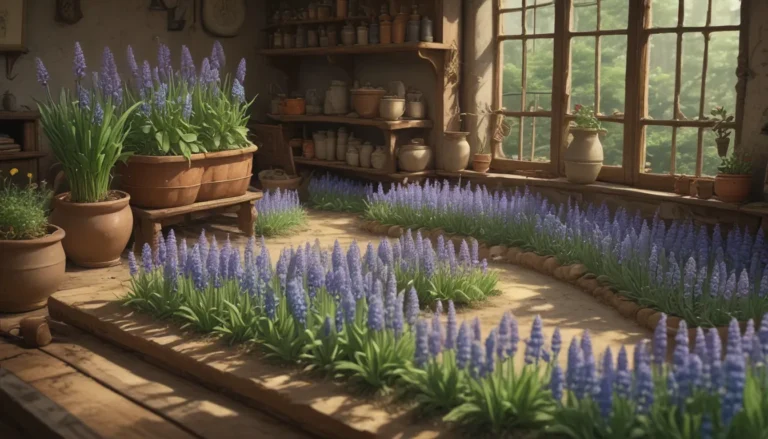A Comprehensive Guide to Identifying and Controlling Common Chrysanthemum Pests

Chrysanthemums, also known as mums, are beautiful daisy-like flowers that are a favorite among gardeners. These herbaceous perennials are well-suited for cultivation in USDA Hardiness Zones 5 to 9, where they thrive in full sun and can grow up to two to three feet tall. With a variety of colors to choose from, including green, lavender, pink, purple, red, rust, white, and yellow, mums add a vibrant touch to any garden.
In this comprehensive guide, we will delve into the world of chrysanthemum pests, discussing 13 common insects that are known to prey on these lovely flowers. From aphids to beetles, caterpillars, and more, we will explore the physical traits of each pest, the damage they can cause, and effective remediation methods. So, let’s jump right in and learn how to protect your chrysanthemums from these pesky invaders!
Aphids
Aphids are sapsucking pests that primarily feed on terminal flower buds and young foliage of chrysanthemums. There are several species of aphids that may prey on these plants, including the green peach aphid and the melon/cotton aphid. Signs of aphid infestation include insects stacked on top of each other, whitish flakes from shed skins, and sticky waste secretions known as “honeydew.” While aphids may not cause significant damage to blooming, large infestations can lead to leaf abnormalities, shoot damage, and stunted growth. Treat affected plants by spraying them with a hose or using insecticidal soap.
-
Bonide® Insecticidal Soap: This product is safe for indoor and outdoor use and comes in ready-to-spray bottles. It is available from Arbico Organics and can help manage aphid infestations.
-
Bonide® Neem Oil: This organic option is an effective fungicide, insecticide, and miticide. It is safe for indoor and outdoor use but may harm beneficial pollinators. Available from Arbico Organics in various sizes.
Beetles
Beetles are another common pest that can damage chrysanthemums by feeding on stems, shoots, roots, leaves, flowers, and buds. Blister beetles, fuller rose beetles, rose chafers, and spotted cucumber beetles are among the beetles that may affect these plants. Look out for wilting leaves and holes chewed through them as signs of beetle infestation. Handpicking beetles and using traps and lures can help control their populations.
- Cucumber Beetle Trap and Lure: Available from Arbico Organics, these traps and lures can effectively catch cucumber beetles and reduce their numbers.
Caterpillars
Caterpillars like cabbage loopers, corn earworms, European corn borers, cutworms, and leaf rollers can also feed on chrysanthemums. The larvae of these pests can cause holes in leaves and damage buds and flowers. Handpick caterpillars and apply horticultural neem oil to manage infestations.
Foliar Nematodes
Foliar nematodes are microscopic, worm-like parasites that can affect chrysanthemums. Look out for brown patches with straight edges along leaf veins as a sign of nematode infestation. Unfortunately, foliar nematodes are hard to detect and impossible to eradicate. Infected plants should be removed and discarded in the trash to prevent further spread.
Fungus Gnats
Fungus gnats are more likely to affect overly wet potted plants than those with proper drainage. Their larvae feed on roots and may carry pathogens that cause damping off. Replace the top layer of potting soil, apply food-grade diatomaceous earth, and use yellow sticky traps to control fungus gnat infestations.
- Yellow Insect Traps: Place these traps near plants to catch flying adult fungus gnats. Available in various packages from Arbico Organics.
Lace Bugs
Lace bugs are sapsucking insects that feed on the undersides of leaves, leading to foliar decline. Look for yellowing leaves and brown excrement as signs of lace bug infestation. Early treatment with insecticidal soap or horticultural neem oil can help prevent severe damage.
Leaf Miners
Leaf miners like the chrysanthemum leaf miner can burrow through foliage, leaving winding trails behind. Treat leaf miner infestations with neem oil or spinosad-based products.
Mealybugs
Mexican mealybugs are sapsucking pests that can deform, stunt, and wilt chrysanthemum foliage. Regular treatments with insecticidal soap can help manage mealybug infestations.
Midges
Chrysanthemum gall midges burrow into foliage to feed, causing gall formation, leaf deformities, and stunting. Remove affected foliage and avoid the use of pesticides for midge control.
Mites
Cyclamen mites and two-spotted spider mites are common pest mites that feed on chrysanthemums. These arachnids can stunt growth and damage foliage. Treat mite infestations with a stream of water and miticides like horticultural oil or insecticidal soap.
Thrips
Thrips are winged sapsuckers that cause stippling and streaking on foliage. Combat thrips with a strong hose spray and horticultural oil.
Other True Bugs
Various true bugs like four-lined plant bugs, harlequin bugs, spittlebugs, and tarnished plant bugs may feed on chrysanthemum foliage. Use insecticidal soap or horticultural oil to control true bug infestations.
Whiteflies
Whiteflies are milky-white sapsuckers that can cause yellowing and stunted growth in chrysanthemums. Wash off whiteflies with a firm hose spray and apply insecticidal soap as needed.
Conclusion
By familiarizing yourself with these common chrysanthemum pests and taking proactive measures to control them, you can ensure your mums remain healthy and vibrant. Inspect your plants regularly, remove pest-damaged foliage, and dispose of it properly. With diligent pest management, your chrysanthemums will continue to provide a magnificent late-season display.
Remember to prune dried stems at the end of the season and clear debris to prevent pest infestations. With these tips in mind, you can enjoy beautiful, pest-free chrysanthemums in your garden.
Have you encountered any of these pests in your chrysanthemum garden? Share your experiences in the comments below!
If you found this guide helpful, be sure to check out our other articles on chrysanthemum care, including how long chrysanthemums last, fertilization tips, and winterizing strategies.
Remember to stay vigilant and keep your eyes peeled for signs of infestation. With timely intervention and effective pest control measures, you can ensure your chrysanthemums remain healthy and vibrant. Happy gardening!





